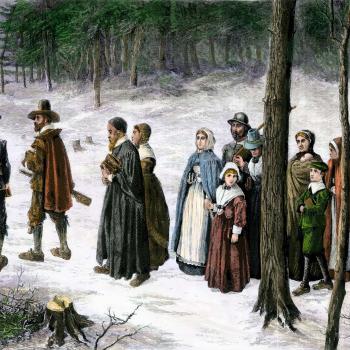A recent archeological find in Siberia is sure to shape how scientists understand relationships between early hominids:
About 90,000 years ago, a young girl lived in the Altai Mountains, a remote range located in what is now Russia. She died when she was only 13 years old, and her bones were piled up in a cave. Those bones revealed she was the child of an unconventional couple: two now-extinct hominins, a Neanderthal and a Denisovan.
As researchers describe in a study published in Nature, the girl, known as Denisova 11, is the first direct evidence that these ancient, distinct hominin species had offspring. Their coupling has been hypothesized before but had never been genetically confirmed until now. …
…
Viviane Slon, Ph.D., a post-doctoral researcher at the Max Planck Institute for Evolutionary Anthropology, was the first to analyze the DNA sequences generated from that bone. Realizing that Denisova 11 was a direct offspring of a Neanderthal and a Denisovan, she says, was a complete surprise.
“We knew from previous research that Neanderthals and Denisovans, who were two genetically distinct groups of ancient hominins, occasionally mixed with each other,” Slon tells Inverse. “But to actually find an offspring of such mixing — that was completely unexpected.”
…
“We only have DNA sequences from a few ancient homimins, about 20 of them, and to find a half-Neanderthal, half-Denisovan individual among them was a big surprise,” says Slon. “This told us that they had the opportunity to encounter each other and these people must have interacted more frequently that we had previously thought.”
Scientists believe that Neanderthals and Denisovans diverged from a common ancestor more than 390,000 years ago. They inhabited Eurasia until they were replaced by modern humans around 40,000 years ago — and they tended to mate with anatomically modern humans as well.
Scientists did not confirm that Neanderthals and anatomically modern humans mated until around a decade ago. These new findings suggest that couplings between various forms of early hominids—Neanderthals, Denisovians, and anatomically modern humans—may have been more common than scientists had once thought.
The creationist organization Answers in Genesis, not to be left out, has responded with a short article by Ken Ham titled: Were Ancient Girl’s Parents from Two Different Species? Ham answers his question in the negative:
The scientific community has been buzzing with the recent news that a small bone fragment recovered from a cave in Siberia is the remains of a 13-year-old girl whose parents belonged to what they call two different human species, Neanderthals and Denisovans. Her ancestry was revealed by a study of her mitochondrial DNA (from her mother) and her nuclear DNA (from both mother and father). The results showed her mother was a Neanderthal and her father a Denisovan. Now, is this surprising in a biblical worldview?
Not at all. Neanderthals and Denisovans are not separate species, though they are labeled as such by secular scientists. Creationists have been saying all along that both are fully human. Their unique characteristics just reflect some of the variety God built into the human genome. Much of this variety and even some unique lineages, such as these Neanderthals and Denisovans, have died out over time.
This young lady and her parents lived after Noah’s flood, likely during the ice age. They can trace their ancestry back through Noah’s sons, to Noah, and through Noah to Adam. While secular scientists may be confused and surprised by what they call “interbreeding,” we’re not at all. These are all humans, all one race, all made in God’s image (Genesis 1:27), so of course they can reproduce with one another. When we start with God’s Word, we get an accurate picture of the world.
While many scientists today consider Neanderthals, Denisovans, and anatomically modern humans to be subgroups in the same species—Homo Sapiens—it is true that many scientists once considered Neanderthals a separate species. It is also true that scientists were surprised at this most recent discovery, is it suggests more frequent encounters—both sexual and otherwise—between these groups than had previously been assumed.
Ham’s claim, of course, is that Neanderthals, Denisovans, and anatomically modern humans are all descendants of Noah’s Family, and that these groups co-existed for several hundred years in an ice age that followed Noah’s Flood. This assumes a remarkable level of evolution—Ham posits that every member of all three groups, with their genetic distinctiveness, were the descendants of a common ancestor (Noah and his wife) only a few hundred years before.
That is not how genetics work.
As Ham’s statement suggests, many creationists see scientists’ willingness to change their minds when confronted with new findings as a problem. For example, until a decade ago, most scientists believed, based on the evidence then available, that Neanderthals and anatomically modern humans did not breed. Since then, new findings have revealed that members of the two groups did breed, and scientists today accept Neanderthal/anatomically modern human breeding as settled fact. But is scientists’ willingness to change their theories to fit new evidence really a bad thing?
Note that while Ham is happy to accept the scientists’ finding that a skeleton found in a Siberian cave had a Denisovan mother and a Neanderthal father, he simultaneously rejects scientists’ finding that this girl lived 90,000 years ago. In other words, Ham is being selective, choosing the scientific findings that line up with his preconclusions and rejecting those that don’t.
Creationists typically predetermine what happened—based on their interpretation of Genesis—and proceed to make science fit those pre-drawn conclusions. In contrast, scientists strive to figure out what happened, without predetermining what happened beforehand. As new evidence becomes available, scientists’ ideas about what happened naturally have to change. That is called good science. If scientists refused to change their ideas in light of new evidence, that would be bad science.
Being willing to change your mind when presented with new evidence is not a bad thing. Scientists’ willingness to admit when they were wrong about something—or when evidence is inconflusive—only makes them more trustworthy.
As an interested layperson, I find approaching the evidence without preset conclusions exciting. How many more species of Homo Sapiens were there? Were there other species exploring our planet, interacting, and sometimes breeding, 100,000 years ago? What happened to them? It’s enough to make me want to take up genetics.
I have a Patreon! Please support my writing!










